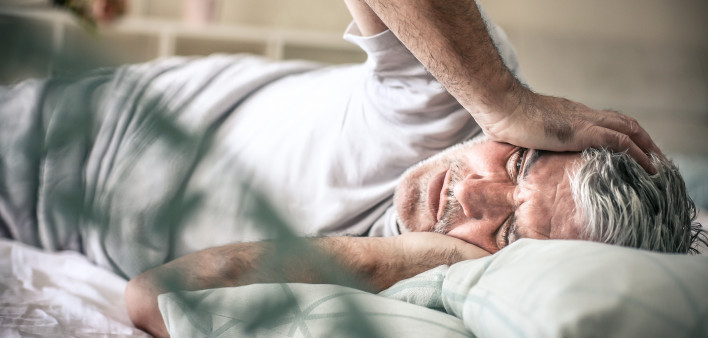At one time or another, most everyone feels down. But feeling down doesn’t always mean you’re suffering from clinical depression—a condition that interrupts your daily routine and transforms life into days and nights of emotional torture and, in some cases, bouts of actual physical pain.
Although doctors can look for a number of signs and symptoms to diagnose clinical depression, the condition presents differently in different people. “The severity, frequency and duration of symptoms vary depending on the individual and his or her particular illness,” explains the National Institute of Mental Health.
To find out more, we spoke with Lisa Jones, a licensed clinical social worker in private practice in Jamaica, New York. Jones is also a board member of the Siwe Project, a recently established nonprofit organization that aims to reduce mental illness stigma in the African and African-American communities.
How would you explain what depression is to the average person?
There’s a fine line between normal blues and not-so-normal blues that affects your ability to concentrate, work and maintain relationships. When I think of depression, I think of someone who is increasingly sad and who is unable to get a full night’s rest. That person may or may not have some difficulty with their diet or their weight. In addition, he or she may lose an overall interest in things that are typically normal for them. I think that sometimes people overlook being depressed because it may seem temporary. While that might be true, what does temporary look like? Depression has many different faces. It can look like someone who sleeps all the time and is visibly sad, or it can look like someone who is not resting much at all, and who maybe has a lot of somatic [or physical] complaints, such as body aches and neck problems. Defining depression can be a challenge because people tend to look at one thing. We tend to be very rigid in what we think someone with depression looks like, so we may talk to a family member or loved one about their depression and feel that because they’re still functional they’re not really depressed.
That kind of [thinking] just minimizes or invalidates how that person is really feeling on the inside. I think that’s where people really get depression confused, because it’s almost as if we [as a society] can’t see it, it’s not real. So on the inside, people may feel sad, worthless, hopeless and not very optimistic about the future. But often we don’t know what’s going on inside based on different ways that people present—their personality, how they handle stress, how they handle life. Someone [who goes] to work every day could still very well have a major depressive disorder versus someone who can’t get out of bed and might lose their job. We just have to work very hard to figure out what is normal for that person. That’s why it’s on a case-by-case basis. If someone normally sleeps 10 hours each day, that’s normal; that’s a piece of who they are. But if someone normally doesn’t do that and is usually pretty physically active and cheerful, then [sleeping long hours] might be a red flag.
What other symptoms of depression aren’t usually recognized as red flags?
Typically, when you think of depression you think of people who are sad and whose thoughts of hopelessness and guilt are sometimes paired with wanting to die and no longer seeing yourself around or needed. But in the last few years, people are presenting their depression symptoms in a somatic way—headaches, migraines, back pains, neck pains—in general, chronic pain. Your body will tell you when something is wrong. Sometimes, I think that we as a society have become so used to not talking about what’s wrong that we’re internalizing problems and our bodies are responding to that. For clinicians, it’s very important to be aware of how symptoms get shown now. It’s not enough for a family member to bring someone in if they’re sleeping all the time and they won’t get out of bed. That used to be the old-school way [to diagnose depression]. Now we have to be more mindful to get the whole picture of that person, especially when you start to talk about mental health and the racial disparities in the African-American community.
What do you think is the most important thing about depression for people to remember?
People should be mindful that in order to meet the criteria for clinical depression, you have to have at least five of the symptoms I previously mentioned for a two-week period. Those must be present. And [after staring at that list of symptoms], sometimes we may start to over-diagnose ourselves. But it’s key for people to understand what the symptoms of depression look like and what they mean. People should not necessarily be alarmed, but they should be informed because information is key. Information helps you become more self-aware. You will be able to acknowledge what is going on with you, or maybe someone else.

iStock (Model(s) used for illustrative purposes only)
One Size Doesn’t Fit All
Depression can be a paralyzing feeling fed by a sense of hopelessness and despair, but not everyone experiences this serious mental illness the same way.






Comments
Comments